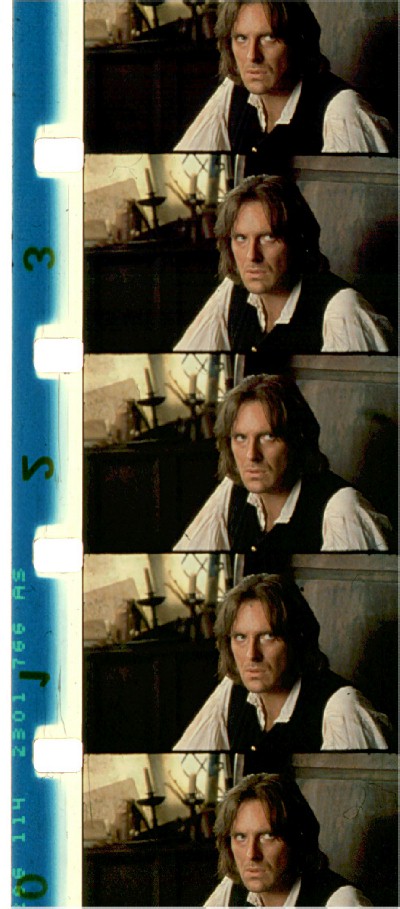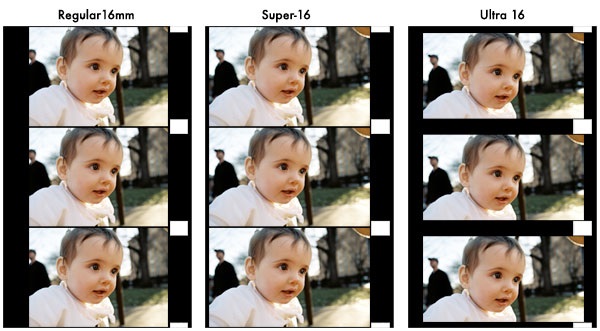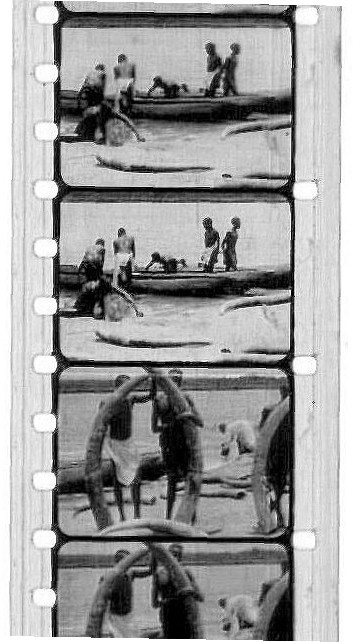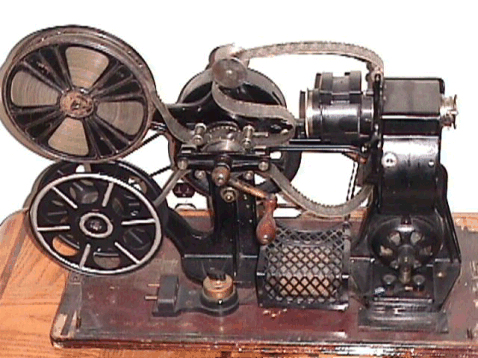|
|
 
|
|
Author
|
Topic: Harper Film Projection System
|
Brad Miller
Administrator

Posts: 17775
From: Plano, TX (36.2 miles NW of Rockwall)
Registered: May 99
|
 posted 05-23-2015 10:51 PM
posted 05-23-2015 10:51 PM




Interesting ebay item #181744735829
quote:
This is a reel of approx 300 ft of special format 16mm film, being sequences from the 1946 British musical feature production The Lisbon Story.
The Harper Film Projection System was never commercially introduced, and equipment is rare or perhaps no longer existing. This film will not run on a normal 16mm projector.
‘Martin Harper, of the Miles Aircraft Company of Woodley, Reading, Berkshire, reasoned that the quality of 16mm Sound on film would be considerably improved if 35mm sound tracks could be directly contact printed, full size, on to 16mm picture prints, and then run, during projection at the correct linear speed for 35mm sound tracks of 18" per second … [which] left the problem of how to marry the 16mm picture speed of 72" per second with the 35mm sound track speed of 18" per second on the one strip of 16mm film. Harper's solution to this problem was to design a special dual purpose film printer for which he obtained a British Patent, applied for on January 4th 1938. To achieve his aim the area available on 16mm had to be reallocated. Edge perforations were no longer used. 3mm each side of the film were reserved for sound tracks leaving 10mm in the centre for the width of the 16mm picture frame. [Originally with two perforations per frame], at a later stage this format was modified slightly to accommodate a third centrally placed sprocket hole, apparently to ease the strain on the film now traveling at the higher speed of 18" per second.’
Conventional films were printed on alternate frame spaces (one set of pictures ‘upside down’ in relation to the other set), with two frames pulled down at each claw stroke on projection. When a reel was finished, it was simply replaced on the feed arm and threaded again. On the second run-through, the alternate pictures of the new scene (and the second soundtrack) were projected.
‘The sole function of the printer and projectors was to reproduce existing 35mm films onto the 16mm gauge with enhanced quality of sound reproduction.’ (Alan Lott) It is not known how many Harper projectors were made or what happened to them. It can now be seen that clever as it was the Harper system was the product of misplaced ingenuity and effort.
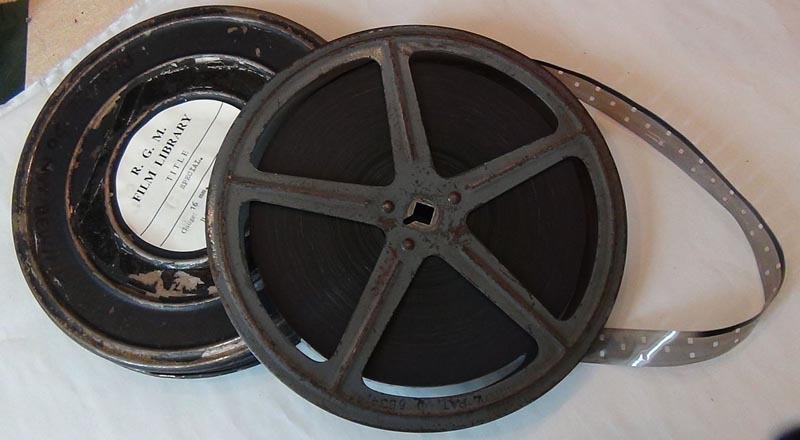
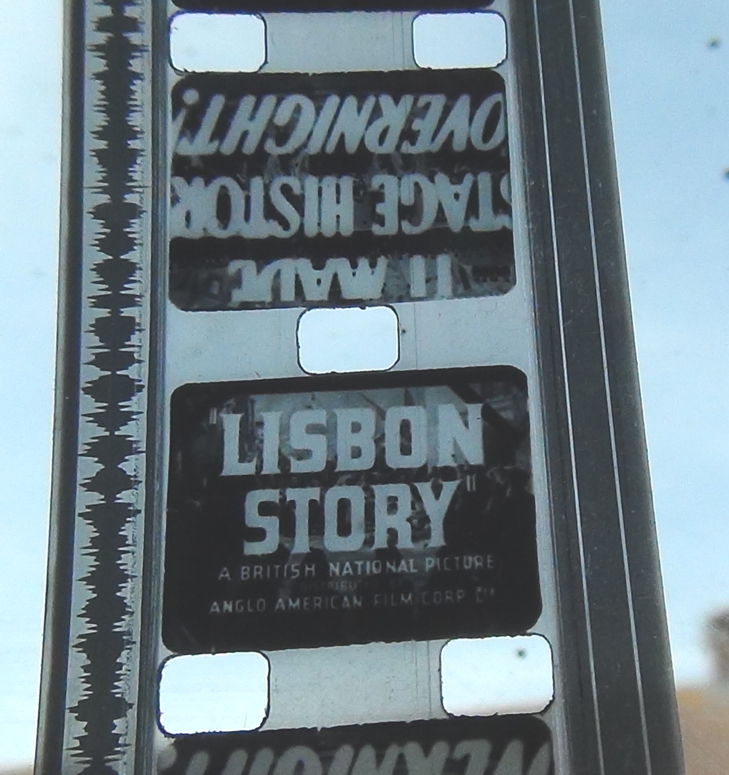
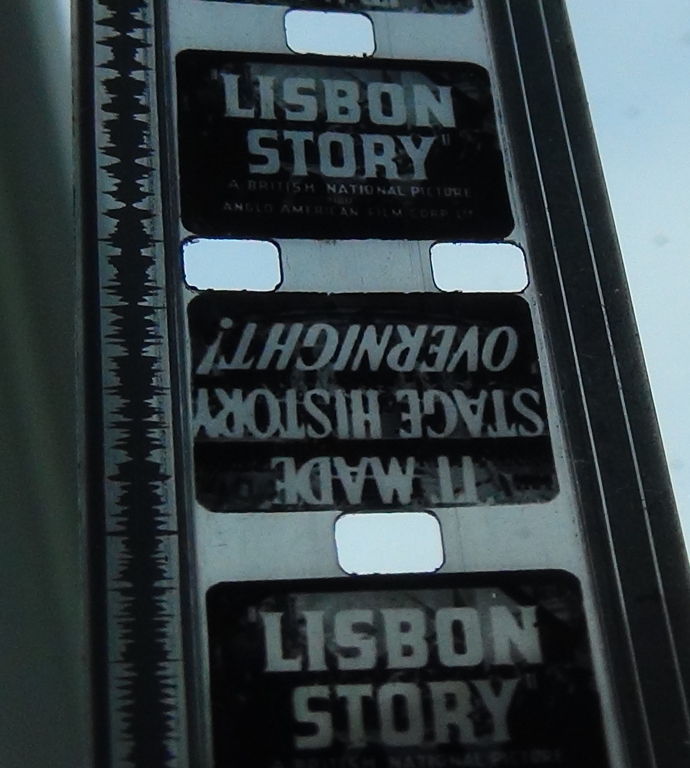
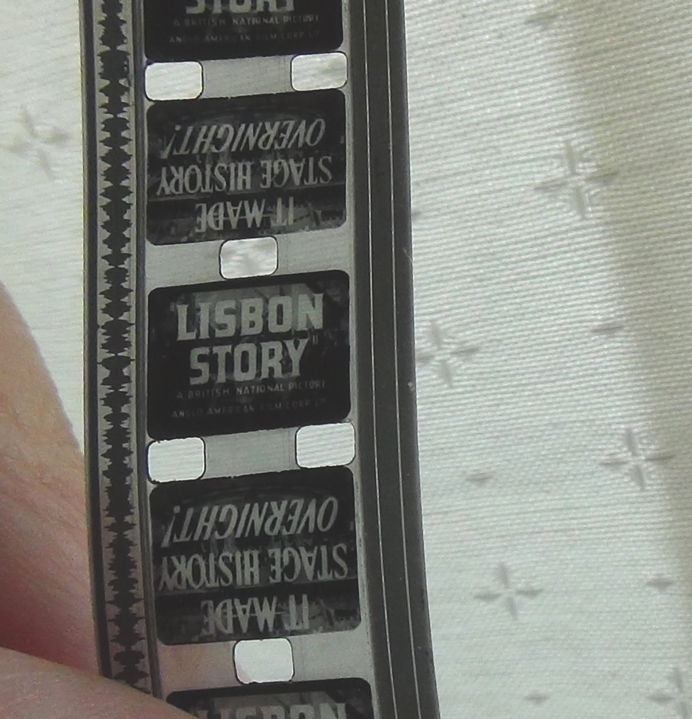
| IP: Logged
|
|
Leo Enticknap
Film God

Posts: 7474
From: Loma Linda, CA
Registered: Jul 2000
|
 posted 05-25-2015 06:52 PM
posted 05-25-2015 06:52 PM





So Harper hated the audio on conventional 16mm so much that he was prepared to reduce the size of the image significantly, just in order to contact print a 35mm soundtrack on it?
Given the dynamic range of the amps and speakers typically used in portable/non-theatre scenarios (classrooms, meeting halls and the like) in the mid-1940s, it would probably have been impossible to hear any improvement anyway. But I'm sure you would have seen the bigger dirt, scratches and grain from the smaller frame size without any trouble. And as with the center perforations on 9.5, even slight perforation damage would be visible in the picture area.
And what happens if you want to show a feature length movie using changeovers on this system? Reel 2 is reel 1 running in reverse, so you've still got to stop to rethread, unless you print reels 1 & 3, 2 & 4 etc., together.
| IP: Logged
|
|
|
|
|
|
|
|
|
|
|
|
|
|
|
|
|
|
|
|
Stephen Furley
Film God

Posts: 3059
From: Coulsdon, Croydon, England
Registered: May 2002
|
 posted 06-03-2015 11:37 AM
posted 06-03-2015 11:37 AM




Steve, 28 mm was quite successful in its day, at least in Europe, I don't know about over there. It didn't last very long, it was introduced in 1912 and the introduction of 16 mm by Kodak pretty much killed it stone dead. The couple of 28 mm prints which I've seen were of high quality, as were the early 9.5 mm notched Pathé prints which I've seen.
I've heard claims both ways as to whether a 28 mm camera was ever produced, but no firm evidence either way.
I've also seen a short length of 28 mm negative at a lecture at MOMI in London. It didn't have the strange perforation system that the prints used, but had three (two and two halfs) on both edges. The prints were safety (diacetate), but the negative I saw was nitrate.
I didn't know that you had a KOK Mitchell. Is that a mains input on it, and if so, is it original? The only one I've seen had a dynamo belt driven from the pain handle for the lamp, but had been converted to use a transformer at some time in its life.
| IP: Logged
|
|
|
|
|
|
|
|
All times are Central (GMT -6:00)
|
|
Powered by Infopop Corporation
UBB.classicTM
6.3.1.2
The Film-Tech Forums are designed for various members related to the cinema industry to express their opinions, viewpoints and testimonials on various products, services and events based upon speculation, personal knowledge and factual information through use, therefore all views represented here allow no liability upon the publishers of this web site and the owners of said views assume no liability for any ill will resulting from these postings. The posts made here are for educational as well as entertainment purposes and as such anyone viewing this portion of the website must accept these views as statements of the author of that opinion
and agrees to release the authors from any and all liability.
|

 Home
Home
 Products
Products
 Store
Store
 Forum
Forum
 Warehouse
Warehouse
 Contact Us
Contact Us




 Printer-friendly view of this topic
Printer-friendly view of this topic











![[beer]](graemlins/beer.gif)
